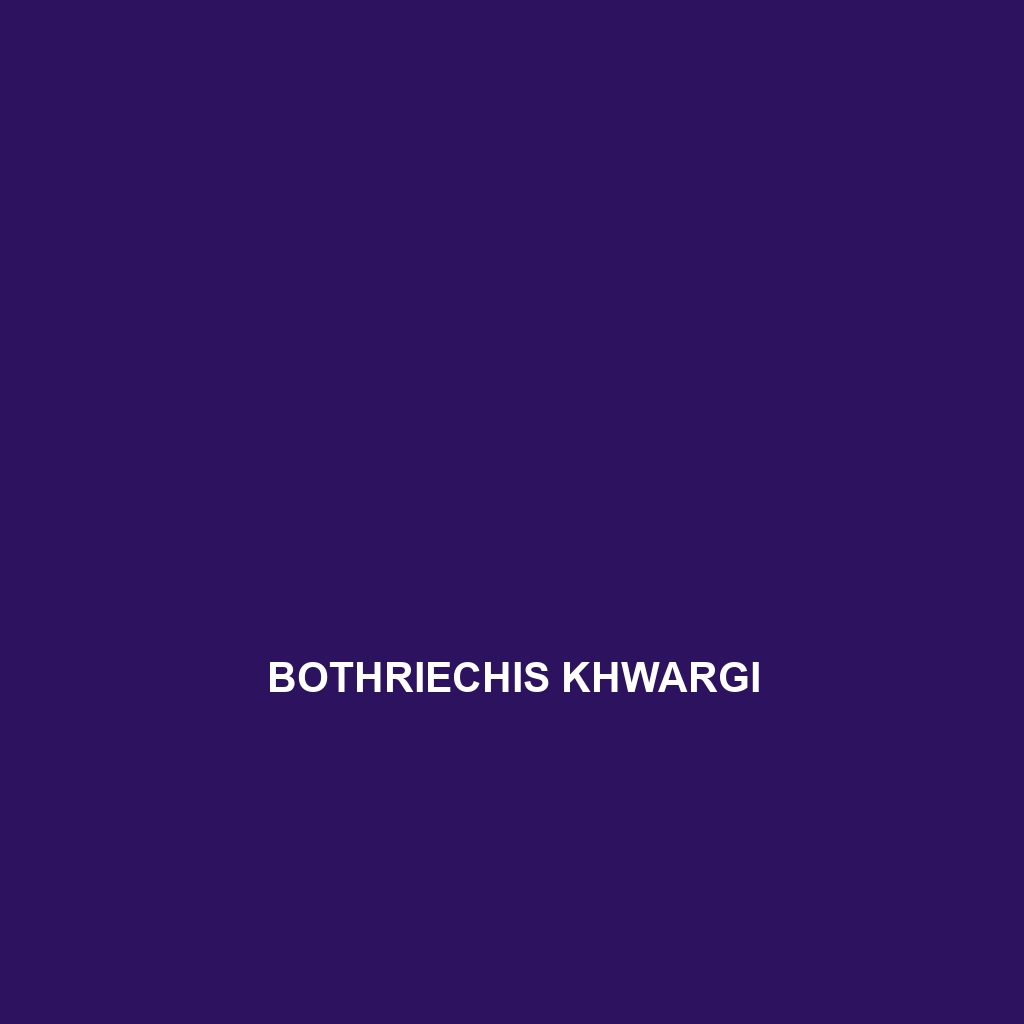Species Description: Bothriechis khwargi
Common Name: Bothriechis khwargi
Scientific Name: Bothriechis khwargi
Habitat
Bothriechis khwargi, commonly known as the Khwargi’s tree viper, is primarily found in the humid montane forests of Central America. This species ranges across the higher elevations in countries such as Costa Rica and Panama. These habitats are characterized by lush vegetation, a high degree of humidity, and an understory rich in ferns and small plants, providing ideal conditions for this arboreal reptile to thrive.
Physical Characteristics
This striking snake typically reaches lengths of 70 to 90 cm (approximately 27 to 35 inches). The coloration of Bothriechis khwargi mainly consists of vibrant green scales, sometimes featuring yellow or brown markings along its body. Its distinctive triangular head and prominent eyes contribute to its unique appearance. The scales are glossy and well-camouflaged, allowing it to blend seamlessly into its foliage environment.
Behavior
Bothriechis khwargi is predominantly nocturnal, exhibiting a primarily arboreal lifestyle, which includes resting on branches during the day. This species is known for its defensive behavior; when threatened, it can exhibit rapid movements and assume a striking posture. Its camouflaged appearance allows it to remain undetected by both predators and prey in the dense vegetation.
Diet
The diet of Bothriechis khwargi consists mainly of small mammals, birds, and amphibians. This species is a sit-and-wait predator, utilizing its excellent camouflage to ambush unsuspecting prey. Its feeding habits are crucial in controlling the populations of these small animals, playing an integral role in maintaining a balanced ecosystem.
Reproduction
Bothriechis khwargi is ovoviviparous, meaning that it gives birth to live young rather than laying eggs. Breeding typically occurs in the wet season, with females capable of giving birth to 5 to 20 offspring. The young are born fully formed and immediately seek refuge in the surrounding vegetation.
Conservation Status
Currently, Bothriechis khwargi is classified as **vulnerable** due to habitat destruction and fragmentation, largely driven by agricultural expansion and deforestation. Conservation efforts are critical to protect its natural habitats and ensure the survival of this species in the wild.
Interesting Facts
Khwargi’s tree viper is known for its potent venom, which is used to immobilize prey. However, it is generally not aggressive towards humans unless provoked. This species has been observed to exhibit a unique behavior of “playing dead” when threatened, which can sometimes deter potential predators.
Role in Ecosystem
Bothriechis khwargi plays a vital role in its ecosystem as both a predator and prey. By preying on small mammals and birds, it helps regulate their populations, which contributes to the overall health of the forest. Additionally, as a part of the food web, it serves as a food source for larger predators, ensuring ecological balance.
